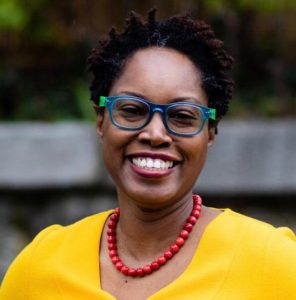How can therapists become more culturally competent?

As our nation struggles toward building a better society for all races, therapists may find themselves doing some self-reflection on how they handle diversity in their own practices. Cultural competence has become a key phrase within the field.
But how does one become culturally “competent?”
In its “Guidelines for Providers of Psychological Services to Ethnic, Linguistic, and Culturally Diverse Populations,” the American Psychological Association explains that providers should have a “sociocultural framework” that will help them use a systematic approach to working with a “diversity of values, interactional styles, and cultural expectations.”
The organization recommends that psychologists become knowledgeable and skilled in doing multicultural assessment and intervention.
“Cultural competency is on a continuum that starts at cultural destructiveness and ends with cultural proficiency,” said Charmain Jackman, Ph.D., a clinical psychologist in Watertown, Massachusetts, and owner of InnoPsych.com, a site that works to match Black clients and therapists.
“It is not just learning about other cultures, but digging deeper to understand individual differences within groups. It is also about changing policies and practices in organizations that impact groups that have been marginalized.”
For some, calling it cultural “competency” is a bit of a misnomer since it is a journey of a thousand steps. There is no end point where someone should say they are now finished, and competent.
“Cultural competency is a dynamic and an ongoing learning process,” Jackman said. “Clients benefit when you commit to learning strategies that improve communication and give you insight into ways that different racial, ethnic, and cultural groups function.”
As with any long journey, the first step, says Helen Neville, Ph.D, professor of educational psychology and African American Studies and director of the RACE Lab at the University of Illinois, must start close to home.
“Before a therapist begins to address issues of race and racism with clients, they must first embark on a personal journey,” Neville said.
“Therapists should first begin to ask themselves about their own racial experiences and the impact these experiences have had on their lives (e.g., friendships, beliefs, attitudes, career, life changes, etc.). It is difficult for a therapist, regardless of race or ethnicity, to be fully present for Black Indigenous and People of Color (BIPOC) clients around their experiences with race and racism if they are unaware of these roles in their own lives.”
Without some sense of cultural sensitivity, working with clients of different races and ethnicities can be difficult and, in some cases, harmful.
“If they have not done this initial work,” she added, “the therapist may unwittingly create tension in the relationship because the client will be able to sense the therapist’s discomfort or worse, they may perpetuate any number of racial micro-aggressions in the therapy session.”
But what about people who don’t work with clients of different backgrounds? Should they be looking to increase training in this area as well? Yes, say experts.
Understanding how to address varied backgrounds and upbringing and family history can be an important tool for any therapist.
Cultural sensitivity training methods could also be used to help better understand people facing other types of bias, from gender to size to sexual orientation to age and so on.
“In my opinion, it makes you a better therapist…an ethical therapist actually,” said Jackman. “It communicates cultural humility and that you understand that every client interaction is inherently cross-cultural.”
In a perfect world, would a client have a therapist who came from the same background? Yes and no. In a truly perfect world, it should not matter. But in our not-so-perfect world, it does seem to help.
“My experience,” said Jackman, “is that clients want to work with a therapist who gets them, who understands the history and cultural backgrounds. They do not want to deal with the burden of having to explain their racial, ethnic or cultural backgrounds to their therapist. They do not want to experience micro-aggressions in their therapy and they do not want to deal with the guilt of the therapist’s ignorance.”
With the imbalance between clients of color and therapists of color, it can be impossible to find someone with the same background, however.
“My research has shown that 95 percent of people of color will end therapy prematurely, usually after the first session, because of the cultural mismatch with the therapist,” said Jackman. “So, yes, people prefer to work with therapists from their cultural background. However, this is not possible because therapists of color make up less than 10 percent of the field.”
As a result, there is both a need and a desire for therapists to get more training in order to better serve diverse populations.
“People are open to having therapists who come from different backgrounds,” said Jackman, “but they want to be understood.”
